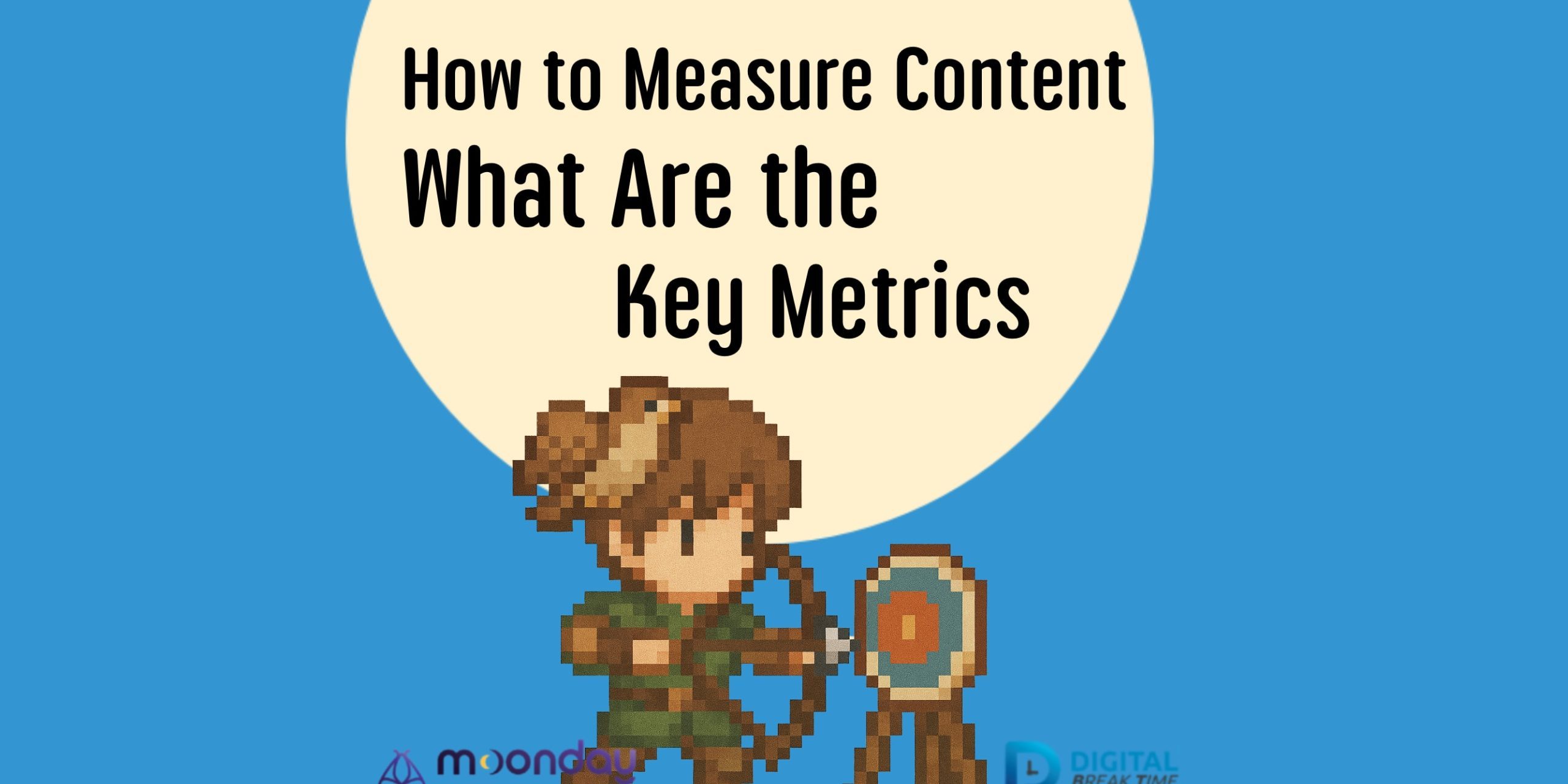Creating content without measurement is like shooting without aiming. You might never know if the content you’ve produced is actually delivering real results for your business. To measure content is a crucial step that helps you understand how your content is performing, identify its strengths and weaknesses, and use that data to refine your marketing strategy to better meet your goals. Today, I’d like to talk about how to effectively measure your content performance.
How to Measure Content? What Are the Key Metrics?
Why is Measuring Content Important?
Creating content without measurement = Not knowing if it’s truly effective.
Measurement allows you to understand the behavior of your target audience. You’ll learn what kind of content they like, what times they are most responsive, and which topics generate the highest engagement. Without measuring your content, you can’t be sure what impact it’s having on your brand, whether positive or negative.
It helps refine your marketing strategy for better precision.
The data from your measurements is a powerful tool for adjusting your marketing strategy. When you know which types of content work well, you can invest more in that direction and reduce waste on content that isn’t performing.
For example, if you find that video content gets a better response than image posts, you should increase the proportion of videos in your content plan. Or, if you notice that posting in the morning yields better engagement than in the evening, you should adjust your posting schedule accordingly.
Use data to align content with business goals.
Measurement isn’t just about tracking likes or comments; it’s about connecting your content to your business objectives, whether that’s increasing brand awareness, generating leads, or boosting sales.
With clear data, you can improve your content to better align with these goals. This could involve changing the format, adjusting the call-to-action, or choosing more appropriate distribution channels.
Basic Ways to Measure Content

Quantitative Content Measurement
Quantitative measurement looks at numbers that are easy to track and compare. The main indicators we often use are:
- Reach: This shows the scope of your content’s distribution. High reach means your content is seen by a lot of people, but it doesn’t necessarily mean they are interested or will take any action.
- Views / Impressions: This is the number of times your content is displayed on a user’s screen. This number is usually higher than reach because one person can see the same content multiple times.
- Engagement: Metrics like likes, shares, and comments indicate the level of audience interaction. High engagement suggests your content is captivating and prompts a response.
- Click-Through Rate (CTR): Calculated as (Clicks / Impressions) x 100. This metric is very important because it tells you how effective your content is at encouraging people to take the next step.
Qualitative Content Measurement
While numbers are important, qualitative measurement shouldn’t be overlooked. Sometimes, content with lower engagement that reaches the right target audience can produce better business results.
- Quality of Followers: Having 10,000 followers who aren’t your target audience is not as good as having 1,000 followers who are. Therefore, you should analyze your follower demographics in detail.
- In-depth Engagement: This includes meaningful comments, voluntary shares, content being put into practice, or the creation of user-generated content. These indicators show a more valuable level of engagement than superficial likes or shares.
- Brand Trust and Recognition: This can be measured by the quality of brand mentions, recognition of your slogan or brand colors, and customers recommending your brand to others.
Can You Measure Content in Other Ways?
Measure Content for Lead Generation
For businesses focused on generating leads, measurement will focus on converting viewers into quality contacts.
- Number of Form Fills / Registrations: Measured by the number of people willing to provide their information in exchange for more details or to participate in an event.
- Content Conversion Rate: Calculated as (Number of Leads / Number of People Who Saw the Content) x 100. A higher rate indicates that your content is persuasive.
- Cost Per Lead (CPL): Calculated by dividing the cost of creating the content by the number of leads generated. This helps determine if your content investment is worthwhile.
Measure Content Against Sales
The ultimate level of measurement is linking content directly to sales. This can be challenging because most customers don’t make a purchase immediately after seeing a piece of content.
- Attribution Model: This tracks how content contributes to closing a sale. It could be by creating awareness at the beginning of the journey, providing information during the decision-making process, or prompting a purchase at the end.
- Revenue Generated from Content: Revenue that can be directly traced back to your content, perhaps through a specific discount code mentioned in the content or by tracking traffic from content that converts into a sale.
- Content ROI: Calculated as ((Revenue – Cost) / Cost) x 100. The higher the ROI, the more worthwhile your investment.
How to Measure Content Effectively

Set Clear KPIs Before Starting a Campaign
Good measurement starts with defining clear Key Performance Indicators (KPIs) before you even create the content. KPIs must align with business goals and be realistically measurable.
KPI Examples:
- Increase brand awareness: Achieve a 30% increase in reach within 3 months.
- Generate leads: Acquire 50 leads per month from content.
- Increase sales: Boost sales by 20% from traffic originating from content.
Use Appropriate Analytical Tools
Choosing the right analytical tools for your content type and distribution channel is essential. You shouldn’t use a single tool for everything but rather a combination to get a complete picture.
For instance, Google Analytics is great for measuring website traffic, Social Media Insights are ideal for social content, and various Marketing Automation Tools are suited for tracking the lead journey.
Collect and Analyze Data Consistently
A one-time analysis isn’t enough. You should monitor and analyze data regularly—daily, weekly, and monthly—to spot trends and adjust your strategy promptly.
Improve Content Based on Measurement Results
The best data is actionable data. Once you have the results, you must use them to improve your content, whether it’s by adjusting the format, changing the posting time, or revising the copy to be more engaging.
Tools for Measuring Content
Google Analytics for Traffic and Conversion
Google Analytics is a free tool for analyzing website visitor behavior. It can track where people come from, how long they spend on your site, and what actions they take.
Platform-Specific Social Media Insights (Facebook, Instagram, TikTok)
Each platform has its own built-in analytics tools that provide specific data for that channel. For example, Facebook Insights provides follower demographics, online times, and post engagement. Instagram Insights focuses on analyzing photos and stories, while TikTok Analytics emphasizes video performance and trending hashtags.
Marketing Automation Tools
Marketing Automation Tools are ideal for businesses that want to track the entire lead journey, from follower to customer. They can analyze which content contributes to closing a sale and often provide comprehensive data, saving a lot of time. However, they are not necessary for every business and are more commonly seen in larger companies.
Conclusion: Measuring Content Performance Effectively
In summary, to measure content effectively, you need to combine several elements. It starts with setting clear measurement goals and choosing the right indicators and tools. Most importantly, you must use the data you gather to continuously refine your content, ensuring it truly serves your brand’s objectives and meets your current needs.
Follow Digital Break Time
Facebook, X, Line Official Account, Instagram, Spotify, YouTube, Apple Podcast
Originally in Thai. Translated to English with the help of Gemini.






